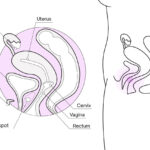DNA, the acronym for deoxyribonucleic acid, is fundamental to life as we know it. It serves as the hereditary blueprint in humans and virtually all other organisms. Often referred to as the molecule of life, DNA carries the genetic instructions that dictate growth, development, function, and reproduction. But Where Is Dna Found within these organisms? This article will explore the primary locations of this vital molecule, shedding light on its crucial roles in different cellular compartments.
The Nucleus: DNA’s Primary Residence (Nuclear DNA)
The vast majority of DNA in eukaryotic cells, including human cells, resides within a specialized compartment called the nucleus. This is why it’s often referred to as nuclear DNA. Think of the nucleus as the control center of the cell, and DNA within it as the master instruction manual. Encased within the nuclear membrane, DNA is protected and organized. Here, DNA is meticulously arranged into structures known as chromosomes. Humans typically possess 23 pairs of chromosomes, totaling 46, within each cell’s nucleus. These chromosomes are composed of tightly coiled DNA, ensuring efficient packaging of this extensive genetic information. Nuclear DNA holds the majority of an organism’s genes, which are the specific sequences of DNA that code for proteins and determine various traits.
Mitochondria: A Secondary DNA Location (Mitochondrial DNA – mtDNA)
While the nucleus is the primary location, DNA is also found in another crucial cellular organelle: mitochondria. These are often called the “powerhouses of the cell” because they generate energy that the cell can use. Interestingly, mitochondria contain their own DNA, known as mitochondrial DNA or mtDNA. This is a much smaller amount of DNA compared to nuclear DNA, and it has a circular structure. mtDNA is unique because it is inherited solely from the mother. Mitochondrial DNA contains genes essential for the function of mitochondria, particularly those involved in energy production. The presence of DNA in mitochondria supports the endosymbiotic theory, which proposes that mitochondria were once independent bacteria that were incorporated into eukaryotic cells.
 Diagram illustrating the double helix structure of DNA, composed of base pairs and a sugar-phosphate backbone, highlighting where DNA is found in cells and its fundamental components.
Diagram illustrating the double helix structure of DNA, composed of base pairs and a sugar-phosphate backbone, highlighting where DNA is found in cells and its fundamental components.
In summary, DNA is predominantly found in the nucleus of cells as nuclear DNA, organized into chromosomes and carrying the bulk of genetic information. However, a smaller but significant amount of DNA, mitochondrial DNA (mtDNA), is also located within the mitochondria, playing a critical role in cellular energy production. Understanding where DNA is found is key to appreciating its function and its central role in heredity and life itself.


